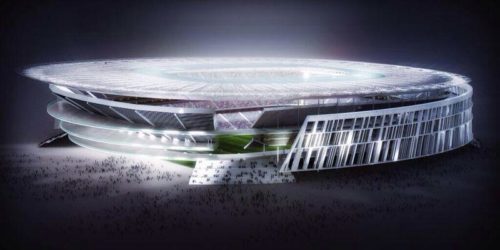
After nearly three years of on-and-off discussions, hedge fund magnate James Pallotta and officials in Rome plan to announce a deal on Wednesday for a new stadium for AS Roma, ASR.MI -1.37% one of the world’s most illustrious teams, according to two people with knowledge of the deal.
The stadium could herald a new era for Italian soccer, which has lagged behind the English Premier League in both foreign investment and stars on the field over the past decade because of aging facilities and the difficulty of replacing them, corruption and what was until recently an outdated system of sharing media revenues among its clubs. Billionaire George Soros considered buying Roma before Pallotta stepped in, then passed.
From the start, the centerpiece of Pallotta’s deal for Roma was the plan to find a new home for the club, which currently shares Rome’s Olympic Stadium with Lazio. The stadium has been renovated multiple times since it first opened some 80 years ago. But with a capacity of more than 80,000 and a track that encircles the playing field, it lacks the intimacy and amenities offered at the home grounds of the world’s other top clubs, particularly those in England.
Pallotta and his representatives were at Roma’s match against Torino Tuesday and not available for comment.
The project has attracted the interest of AEG, one of the world’s leading venue operators. “AEG is quite interested and is pursing the opportunity play a role in the development of this incredible project,” said Bob Newman, President, AEG Facilities. “The Rome market is one of the most exhilarating in the world and, add to that the association with one of sports’ most iconic teams and clearly, this development is one of the most exciting to come along in years.”
A new, privately owned Roma stadium would be roughly a third smaller and part of a larger commercial project in the city’s southwest region. The challenge of navigating Italy’s abstruse bureaucracy was long seen as a barrier to entry in Serie A for a foreign investor. If the Roma project proves successful, it would show that the code of Italian soccer can be cracked.
With the cost of even a middling English club growing to the mid-nine figures, foreign investors are now clearly willing to take the risk in Italy’s Serie A. Erick Thohir, an Indonesian businessman, purchased a controlling interest in Milan’s Internazionale last fall in a deal that valued the club at about $480 million.
Italy’s biggest clubs have traditionally belonged to a handful of the country’s most powerful families. The Agnellis, founders of Fiat, are the power behind Juventus. JUVE.MI +0.21%Former Prime Minister Silvio Berlusconi has owned AC Milan since 1986. And the Morattis were synonymous with Internazionale in the 1960s and again for nearly two decades before Thohir took over.
Whereas Serie A might have been seen as Europe’s top league—or at least been in that conversation—in the 1980s and early 1990s, slow growth has seen it fall behind its rivals in England, Spain and Germany. In 2011-2012, for instance, Serie A generated just over half as much revenue as the English Premier League, according to Deloitte, which monitors soccer finance.
That could improve over the long term, despite sluggish commercial revenue growth. Since the 2010-2011 season, the league has negotiated its television deals collectively to avoid the type of situation occurring in Spain—superclubs there such as Real Madrid and Barcelona sign huge broadcast contracts individually, leaving the rest of the teams to fend for themselves.
Last season also marked the start of an improved three-year contract with broadcasters Mediaset and Sky Italy, a vitally important move for a league that has recently relied more heavily on television rights money than any of the other major European championships, according to Deloitte.
Still, Italian teams have suffered on the field. Despite Milan’s success in the mid-2000s, only one Italian side has advanced past the quarterfinals of the Champions League, Europe’s elite club tournament, in the past five years. This season was even worse: Serie A’s only group-stage survivor, Milan, was knocked out in the second round.
Corruption and match-fixing scandals haven’t never far away, either. In 2006, the so-called Calciopoli affair ensnared four major clubs and a few of the country’s top players, right before Italy won that year’s World Cup.
Fiorentina, AC Milan and Lazio were deducted points for the following season in the fallout—and they were the teams that got off easy. Juventus, which is considered Italian soccer royalty, was stripped of two league titles and banished to the second tier. The punishments were originally more severe, with Juventus expected to drop to the third tier, but they were reduced on appeal.
The new stadium for Roma faces up to a year of reviews and public comments, but the planned announcement on Wednesday signals that the most important officials support the project and make it more likely to come to fruition than when similar announcements are made in the U.S.
Wall Street Journal (http://online.wsj.com)
Write to Matthew Futterman at [email protected] and Joshua Robinson at [email protected]
